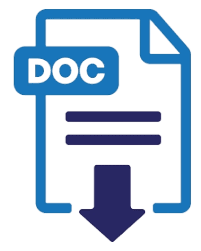SYNTACTIC TRANSLATION STRATEGIES IN ENGLISH-INDONESIAN ASEAN CHARTER
Gunadarma University
Indonesia
Gunadarma University
Indonesia
Abstract
This research was carried out to analyze the syntactic translation strategies applied in English-Indonesian ASEAN Charter document. This research also aimed to find out which strategy is most often used and its possible reason. This research is based on the theory of syntactic strategies by Andrew Chesterman (2016, p. 91). The researcher used a qualitative method. The data used in this research is in the form of text on the ASEAN Charter document. This research showed that there are 8 syntactic strategies used in the English-Indonesian ASEAN Charter. Those are literal translation (33%), loan and calque (31%), transposition (8%), unit shift (14%), phrase structure change (8%), clause structure change (0,38%), level shift (1%), and scheme change (5%). Literal translation is the most widely applied in this research because this strategy is an appropriate strategy to translate a legal document.
Keywords
References
Adnin, A. N. (2014). An Analysis of Translation Strategies Found in English-Bahasa Indonesia Short Story Some Words with a Mummy. Malang: Universitas Brawijaya.
Aljubayri, M. A. (2016). Some problems of translation from English into Arabic. Qasim: Al-Qassim Private Colleges Buraidah.
Alyfia, H., & Ali, A. J. (2021). Translation Analysis of Beauty Terms in Webtoon: The Secret of Angel and Make-Up Man. Indonesian Journal of EFL and Linguistics, 6(2), 393-409. DOI: http://dx.doi.org/10.21462/ijefl.v6i2.391
Amanda, S. (2014). Translation Strategy in Twitter Terms: English and Indonesian Version. Journal of Language and Literature Vol 3 No. 2 Desember 2015, 102-108.
Arikunto, S. (2013). Manajemen Penelitian. Jakarta: Rineka Cipta.
Bell, R. T. (1991). Translation and Translating: Theory and Practice. London and New York: Longman.
Catford, J. C. (1965). A Linguistic Theory of Translation. Great Britain: Oxford University Press.
Chesterman, A. (2016). Memes of Translation: The spread of ideas in translation theory Revised Edition. Amsterdam/Philadelphia: John Benjamins Publishing Company.
Creswell, J. W., & Creswell, J. D. (2018). Research Design Qualitative, Quantitative, and Mixed Methods Approaches 5th Edition. Los Angeles: SAGE Publications, Inc.
House, J. (2016). Translation as Communication Across Languages and Cultures. London and New York: Routledge Taylor & Francis Group.
House, J. (2018). Translation: The Basics. New York: Routledge.
Jääskeläinen, R. (1993). Investigating Translation Strategies. Joensuu: University of Joensuu.
Kurnianingtyas, W. (2008). Kualitas Hasil Penerjemahan Individu dan Penerjemahan Kelompok. Surakarta: Universitas Sebelas Maret.
Larson, M. L. (1998). Meaning-Based Translation: A Guide to Cross-Language. New York: University Press of America.
Molina, L., & Albir, A. H. (2002). Translation Techniques Revisited: A Dynamic and Functionalist Approach. Meta: Translators' Journal, vol. 47, 498-512.
Nazzaratty, A. R. (2021). Translation Techniques and Translation Shifts in the Short Story Little Red Riding Hood into Indonesian. Jakarta: Gunadarma University.
Newmark, P. (1988). A Textbook of Translation. Shanghai: Shanghai Foreign Language Education Press.
Nida, E. A., & Taber, C. R. (1982). The Theory and Practice of Translation. Netherlands: E. J. BRILL, LEIDEN.
Rahayu, N. W., Sedeng, I. N., & Indrawati, N. L. (2020). The Syntactic Strategies and Equivalence of English Non Finite Verbs which Translated into Indonesian with Reference to National Geographic Magazine. Linguistika, 39-47.
Sari, H. R. (2014). Translation Strategies Found in Translating Script of Drama Pada Suatu Hari into Silly Jealousy. Indonesian Journal on Learning and Advanced Education (IJOLAE), 1-12.
Sugiyono. (2015). Metode Penelitian Pendidikan (Pendekatan Kuantitatif, Kualitatif, dan R&D). Bandung: Alfabeta, cv

